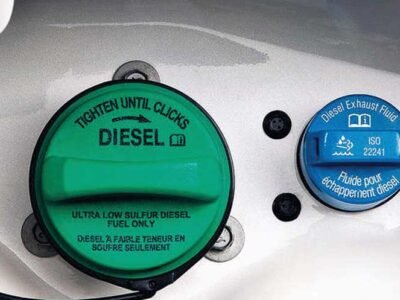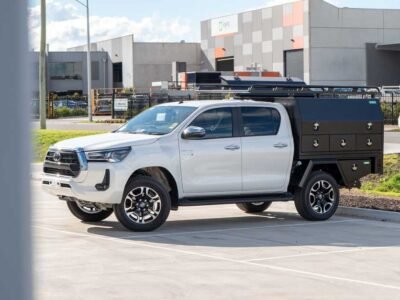The Ford Motor Company is investing two $11.4 billion mega-sites for the future of their company, culminating in their $22 billion net worth. Two of their most popular car models are the Ford F150 and the Ranger.
When weighing up a Ford F150 vs Ranger, which model is better? This short guide will give you the pros and cons of the Ford F150 vs Ranger to help you decide.
Pros and Cons of the Ford F150
The ground clearance for the 4×4 Ford F150 comes in at 9.4″ in height. Three key factors in determining off-road performance are approach, break-over, and departure angle.
The Ford F150’s approach angle measures in at 25.5, the break-over comes in at 21, and the departure angle is set at 26. These are minor measurements to some people. But, these are important attributes, as they can enhance the off-road experience.
Body & Detailing
In the end, the styling of the body you choose is subjective. But, it’s important to note the differences in detail. The Ford F150 contains boxier lines than the Ranger, giving it a sharper look.
The biggest difference between the two, regarding the body, is the bed size. This is sometimes a dealbreaker for most individuals.
The bed size for the Ford F150 is significantly bigger. You’ll get a 5-1/2 foot, 6-1/2 foot, and even an 8-foot box. Your longer wheelbase may limit the cab size.
If you use your truck bed often, either as a tradesman or a contractor, the F150 may benefit your duties. Despite these two trucks’ half-inch difference in cab size, the cubic feet is larger with the Ford F150. You are given ten more cubic feet of usable space.
The 5-1/2 foot box is the smallest option available for the F150. But overall, you get more usable space in comparison to the Ford Ranger.
Engine Attributes
One major difference between the two is their engines. The Ford F150 provides a long list of powertrain options. It can provide V6, V8, and even diesel options.
The Ford F150 provides a large amount of towing capacity. It can provide towing for over 12,000 pounds of weight with no trouble.
The 2.7 eco-boost provides 19 miles per gallon in the city and 26 miles per gallon for the highway.
Interior Construction
The interior of the Ford F150 packs a considerable amount of space within its interior. It provides around 30 cubic feet more space than the Ford Ranger when comparing Super Crew to Super Crew.
The interior in total provides around 132 cubic feet of space. It provides more than enough room for a family of 4 and can hold additional tools and miscellaneous items.
The interior finishes, XLT to XLT, hold a lot of similarities. This includes the sport cloth interiors, similar dashboard and steering wheel finishes, and a sync touchscreen.
The touch controls are a little more difficult to navigate and provide fewer features when it comes to safety. You’ll have to dig a little deeper with the Ford F150 to find those intricate safety net features.
Pros and Cons of the Ford Ranger
The ground clearance for the Ford Ranger comes in at 8.9″ in height. Which is about half-inch shorter than the Ford F150.
The Ranger’s approach angle is set at 28.7, while the break-over comes in at 21.5, and the departure angle measures in at 25.4.
Even though this is a smaller truck, the shorter wheelbase can help out. It can allow the ranger to have a slight edge in utilizing these key off-roads stats.
The look of the Ranger has a softer look in comparison to the Ford F150. The smooth contours of the body. The bed size for the ranger is smaller in comparison.
One option you have for the ranger is the Supercrew with a five-foot box. The other option available is a super cab which can allow for a six-foot box.
Engine Options
The Ford Ranger only contains one powertrain option. The 2.3 liters four-cylinder eco-boost offers moderate power in comparison to the Ford F150. This provides fewer options overall in comparison to the Ford F150 but a great value for the power.
The Ranger engine lends itself to less towing options. The Ranger will max out at around 7500 pounds for towing.
There are better options when it comes to fuel mileage. The engine provides 20 miles per gallon for the cities and 24 miles per gallon on the highway.
Despite their differences, both vehicles still average 22 miles per gallon. This meets the standard requirements for both Ford Motor Company and the EPA.
With that said, both engines provide similar output. The Ranger will not give you a landslide difference in terms of mileage or performance. Your Ford Dealer in Racine can help you learn more about each vehicle’s performance.
Interior Lining & More
One last major difference between the two vehicles is their interiors. The interior of the Ford Ranger is considerably smaller than that of the Ford F150.
But, the Ranger is not claustrophobic in any sense. The interior holds just over 97-1/2 cubic feet of space. It’s smaller in comparison to the Ford F150 but can still hold provide a comfortable amount of space. It can still comfortably hold a family of 4, including a car seat, without any issue.
Aside from the size, a plus for the Ford Ranger is the CoPilot 360. This is a standard feature that is baked into the XLT. This will give you great safety features such as blind-spot awareness, cross-traffic alert, automatic emergency brake, and lane-keeping features.
Ford F150 vs Ranger
When it comes to size comparison between the Ford F150 vs Ranger, the Ford F150 is the clear victor. The Ford F150 is a larger more durable truck for more utilitarian purposes. This is great for people like contractors and tradesmen that require more space.
The Ford Ranger is similar to your everyday car but with all the features and pros of a truck. It fits in any parking space and can provide great things for any family. In the end, the choice depends on what you’re looking for in your vehicle.
Follow our blog for more information about your next Ford truck purchase!












